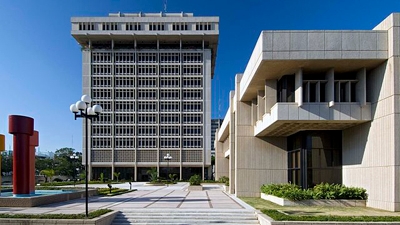Challenge
The global economic slowdown in 2001, the events of September 11, 2001, and the banking crisis in 2003 shattered the Dominican Republic’s already weakened macroeconomic framework and jeopardized its growth prospects. By honoring all deposits, including off-shore and off-balance sheet exposure, of the failed banks, the government helped limit contagion in the banking system. However, it placed a very large fiscal burden on the country, particularly the Central Bank, which was severely de-capitalized. This added to the urgency of re-capitalizing the Central Bank and strengthening the financial sector, especially the regulatory institutions.
Solution
The World Bank’s strategic approach to supporting the financial sector during this troubled period included addressing the fundamental weaknesses in the financial system and encouraging medium- to long-term institutional and policy reforms. This Financial Sector Technical Assistance Loan was prepared during the banking crisis and was designed to support these medium-term institutional and market reforms.
Results
The financial system has benefitted from the initiatives supported by the project in terms of improved performance and reduced risk of another crisis, which is reflected in significantly improved indicators in the banking system. For example, past due loans declined from 7.5 percent in 2005 to 1.7 percent in 2011, while the banking system’s capitalization rose from 8.8 percent to 9.7 percent. With this, the ability of the banking system to withstand external shocks has notably improved as demonstrated by its capacity to deal with the effects of the international financial crisis of 2008.
The pension system experienced strong growth during the project implementation period. Between 2005 and 2011, the size of the pension funds’ investment portfolio expanded at an average annual rate of 41.6 percent. If this trend continues, it will greatly increase the demand for investible securities thus providing greater opportunities for domestic companies to access the capital markets.
The new Real Time Gross Settlement System became operational in 2008 and has already produced very positive results in terms of greater market efficiency and reduced risk. Key benefits of the new system include:
- Reduced fraud as the system applies rigorous validation standards to each transaction, plus regulators are engaged in ongoing surveillance of transactions.
- Greatly reduced settlement time, as the transactions are recognized on a real time basis, thereby reducing the time from as long as 24 hours to only minutes.
- Authorization of the national securities custodian to de-materialize securities in 2008, thus enhancing the liquidity and safety of securities transactions.
The project also supported the creation of a joint Central Bank-Banking Superintendency web-based portal that has notably improved the timeliness and quality of information available to these institutions. It also contributed to the introduction of a modern platform that allows the Ministry of Finance to manage the public debt in a more efficient manner.
Bank Group Contribution
The total cost of the project was US$13.2 million. The Bank contributed US$12.01 million through a technical assistance loan. The government of the Dominican Republic contributed US$1.19 million.
Partners
The project’s principal partners were the government agencies directly involved with the financial sector including the Central Bank, the Ministry of Finance’s Public Debt Office, the Superintendency of Banks, the Superintendency of Insurance, the Superintendency of Pensions and the Superintendency of Securities. After a restructuring of the project in 2009, the Superintendency of Insurance was excluded. The Project Implementation Unit within the Central Bank coordinated multiple activities across the participating agencies.
The Bank, the International Monetary Fund (IMF), and the Inter-American Development Bank (IADB), followed a coordinated approach to engage the authorities in crisis management. The IMF was the first responder with a Stand-By Agreement in August 2003, which provided US$620 million to address the Central Bank’s quasi-fiscal deficit through a re-capitalization strategy. The IADB’s US$6.6 million technical assistance project focused on assisting inspections of banking institutions, which were conducted with international consultants.
Moving Forward
The Bank and the government are discussing options for non-lending technical assistance in areas such as the delivery of a crisis simulation exercise to gauge the country’s preparedness for potential negative developments in the financial sector; the delivery of financial services to micro, small, and medium enterprises (MSMEs), and the consolidation and supervision of financial cooperatives.
Beneficiaries
The beneficiaries of this project are mainly the financial institutions whose performance improved after the strengthening of the regulatory framework and financial system infrastructure. Individuals, whose savings are in bank deposits or other types of investments, are also less vulnerable to losses. Greater confidence in the financial system will also contribute to a higher savings rate and thus greater availability of financing for investments.
